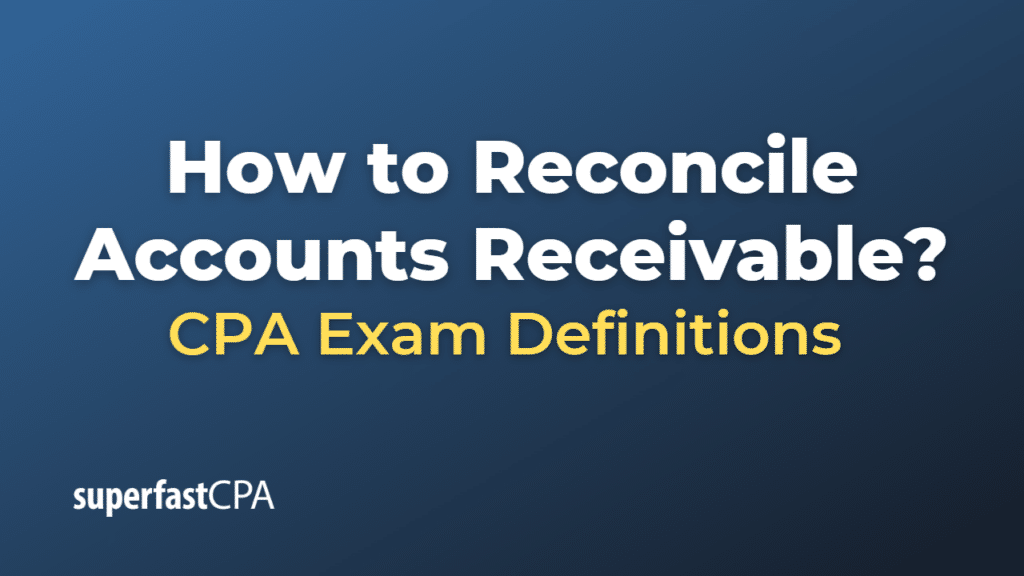How to Reconcile Accounts Receivable
Accounts receivable reconciliation is a process that compares the balance of the accounts receivable ledger in a company’s accounting system to the details of the amounts owed by customers. The goal is to ensure accuracy and completeness of records.
Here are the steps to reconcile accounts receivable:
- Prepare: Gather your accounts receivable ledger, individual customer account records, and any payment records for the period you’re reconciling.
- Verify Customer Balances: Review each customer’s account balance in your accounts receivable ledger and compare it to the individual account records. This will help you confirm that the balances match and that all invoices and payments are correctly recorded.
- Identify Discrepancies: If you find discrepancies, such as invoices that haven’t been recorded, payments applied to the wrong account, or other errors, note these down for correction.
- Adjust Accounts Receivable Ledger: Adjust your accounts receivable ledger to correct any identified errors. This might involve recording missed invoices, correcting misapplied payments, or adjusting for bad debts.
- Reverify Totals: Once all adjustments have been made, the total of your adjusted accounts receivable ledger should match the total of the individual customer account records. If the totals still don’t match, you’ll need to recheck your work.
- Document the Reconciliation: Keep a record of the reconciliation process, noting any discrepancies found and the corrections made. This documentation can be helpful for audits and future reference.
By ensuring that your accounts receivable are correctly recorded, you can have a better understanding of your business’s cash flow and can more effectively manage customer payments and collections.
Example of How to Reconcile Accounts Receivable
Your company has three customers: Customer A, Customer B, and Customer C. As of June 30, 2023, your company’s accounts receivable ledger shows the following balances owed by these customers:
- Customer A: $1,500
- Customer B: $2,000
- Customer C: $2,500
- Total: $6,000
However, when you check the individual customer account records, you notice the following:
- Customer A owes: $1,500
- Customer B owes: $1,500
- Customer C owes: $3,000
By comparing these, we can see that there are discrepancies with Customers B and C. Here’s how you might handle this:
Customer B:
- Investigate the discrepancy: You find that a payment of $500 from Customer B was mistakenly not recorded in the ledger.
- Adjust the accounts receivable ledger: Record the missing payment, which reduces the balance of Customer B to $1,500.
Customer C:
- Investigate the discrepancy: You find that an invoice of $500 to Customer C was not included in the ledger.
- Adjust the accounts receivable ledger: Record the missed invoice, increasing the balance of Customer C to $3,000.
After these adjustments, your revised accounts receivable ledger matches the individual customer account records:
- Customer A: $1,500
- Customer B: $1,500 (adjusted from $2,000)
- Customer C: $3,000 (adjusted from $2,500)
- Total: $6,000
This is a simplified example. In reality, a company may have many more customers, and the accounts receivable reconciliation process could be more complex. The general steps, however, remain the same. Regular reconciliation ensures that your accounts receivable are accurately recorded and can help improve cash flow management.













